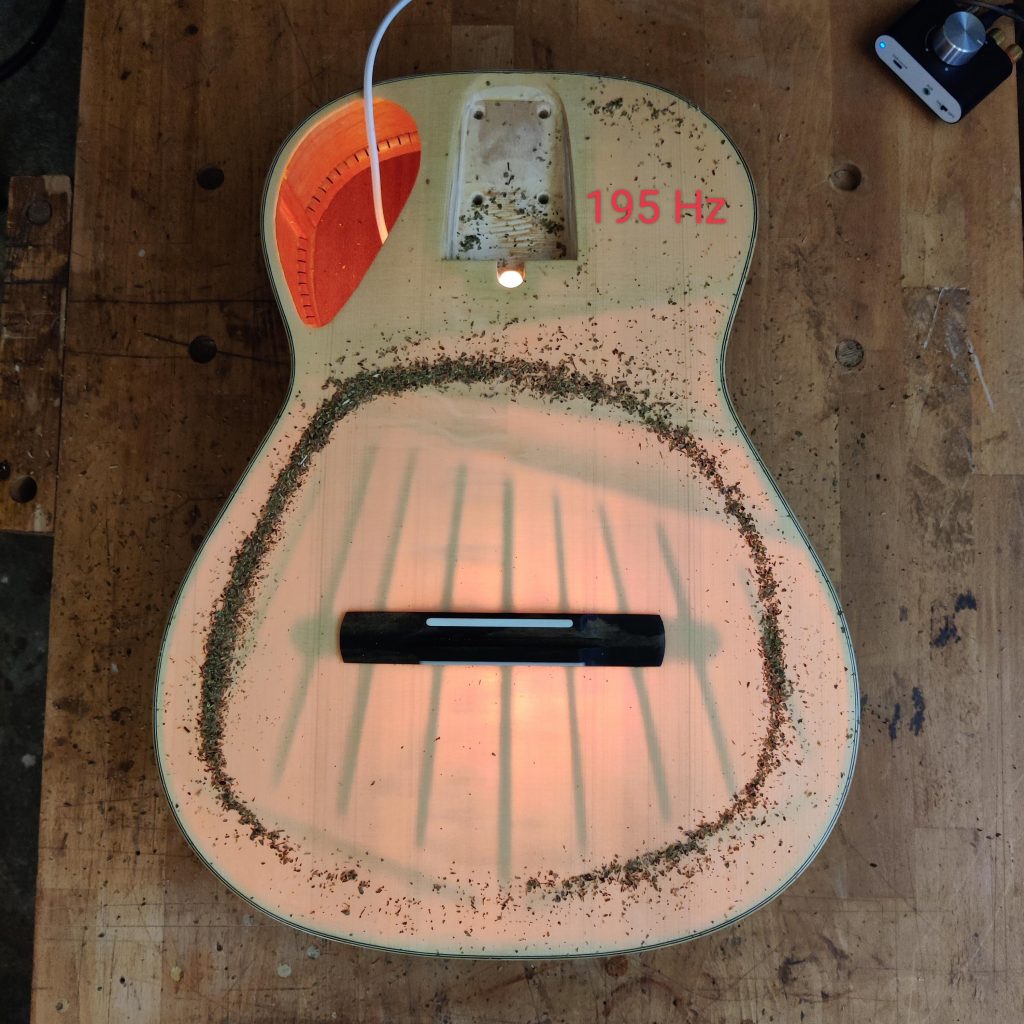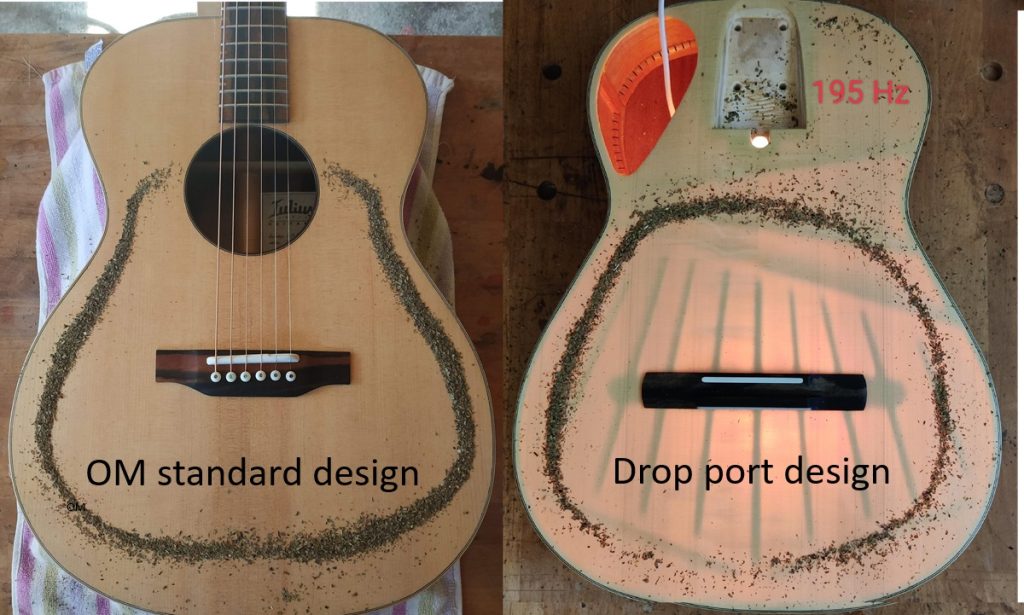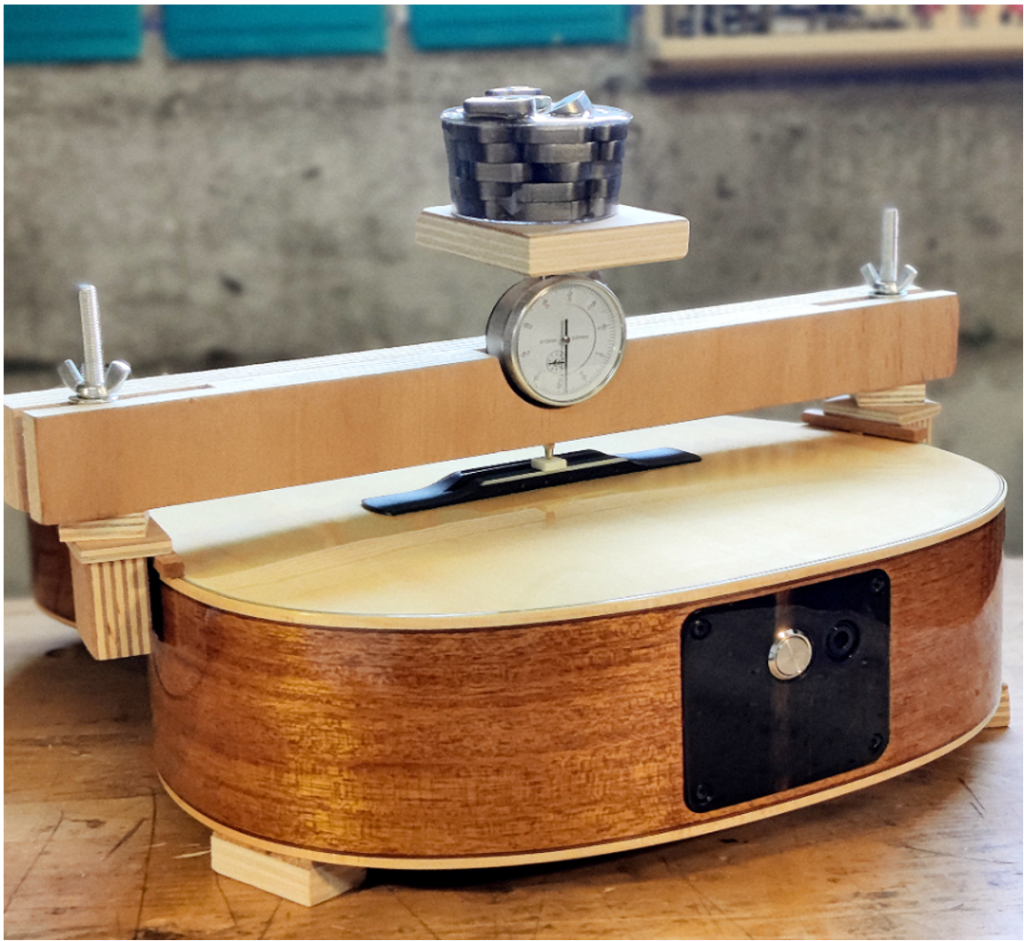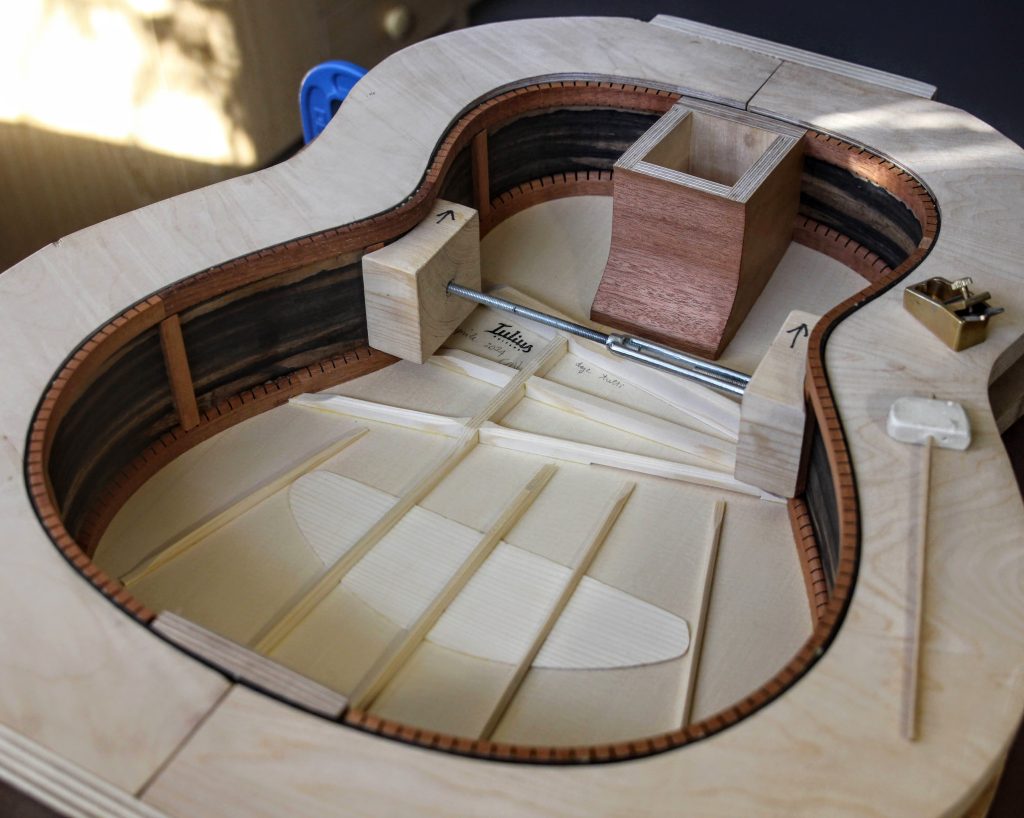The soundboard monopole
The most powerful resonance of the guitar’s body, which largely defines the instrument’s sound, is the soundboard monopole.
This resonance is typically produced by the central zone of the soundboard, around the bridge, which contributes almost 50% of its mass.
The technical designation of the soundboard monopole is T(1,1)2, and it is usually the second peak we encounter in the frequency response of the acoustic guitar, right after the acoustic resonance T(1,1)1.



In a standard OM design, the central soundhole reduces the active surface area of the monopole. The drop port design maximizes the active surface area of the soundboard monopole, increasing dynamic range and responsiveness.
The structural function of the body is also improved. The acoustic guitar body must withstand the continuous tension of the strings (around 70 kg) throughout its lifespan.
By removing the soundhole between the bridge and the nut and replacing it with the transverse brace of the T-Fan design, the structural strength is significantly increased, reducing the risk of soundboard caving and neck resets.
The main parameters of the monopole resonance are:
– equivalent mass
– equivalent stiffness
– resonance frequency
– monopole mobility
These are the parameters which contributes to define:
– acoustic efficiency of the instrument and the dynamic character of its sound.
– the initial transient of the note, the feeling of reactivity of the strings under the fingers.
– the ability to accept strong stimuli without generating a sensation of saturation (as during strumming with plectrum and full chords).
– the instrument’s predisposition to producing wolf notes and feedback on the stage.

an excerpt from the manual: Mastering the sound of the acoustic guitar.
The monopole mobility data is calculated from mass and stiffness values, with which it shares an inverse relationship: rigid and heavy soundboards have low mobility, and vice versa.
Monopole mobility indicates the amount of total energy required from the strings to activate the soundboard and produce sound, thus indicating the instrument’s responsiveness.
Low monopole mobility values (less than 13 s/Kg³) are typical of mass-produced instruments, which can be adapted for live performance (low feedback sensitivity) or for strumming and flatpicking.
High monopole mobility values (more than 13 s/Kg³) are typical of highly responsive instruments, often favored for fingerpicking but more susceptible to wolf tone problems.

All Iulius Guitars exhibit high monopole mobility values (starting from 16 s/Kg³), resulting in high responsiveness and dynamic range.
Combining individual resonance tuning with the ETS system, I maintain this instrument’s high sensitivity while eliminating wolf tones, ensuring great sustain and accurate intonation across the entire fretboard.

Every detail is important when tuning the acoustic of the instrument; a perfect balance that allows the guitar to express its maximum potential, with a coherent, harmonic and juicy sound, plenty of sustain and balance across the fretboard, as you can hear it here:
Each Iulius Guitar model is offered with an individual specification sheet that also reports the frequency response. This data allows you to track the evolution and aging of the instrument over the years, and the ETS system will enable you to fine-tune the main resonances if necessary, to always maintain the guitar at its maximum acoustic potential.

